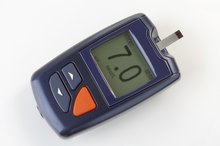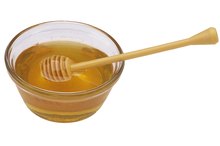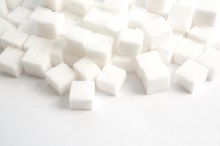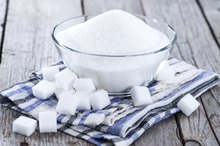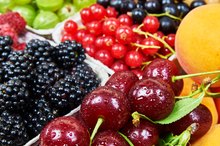Common Uses of Sucrose
Sucrose is the chemical name for white sugar, according to Boston University. Other forms of sucrose are brown sugar and powdered sugar, and sucrose is also in honey. Sucrose has many uses, and it is in many foods, but too much can lead to obesity and type 2 diabetes.
If you are experiencing serious medical symptoms, seek emergency treatment immediately.
Sweetener
Sucrose is a sweetener in many beverages, such as soft drinks and energy drinks, and in sweets. You can also use sucrose as a tabletop sweetener for coffee, tea and fruit. Alternatives to using sucrose are to choose naturally sweet foods, such as fruit, or foods with non-nutritive sweeteners, such as sucralose, aspartame or saccharin. The American Heart Association recommends that women limit their intake of added sugar to 100 calories per day or 6 grams of sugar, and men should limit their intake to 150 calories per day or 9 grams of sugar.
Source of Energy
The Effects of Brown Rice Syrup on Blood Sugar
Learn More
Sucrose is a source of energy for your body because it is a caloric carbohydrate, which means it provides 4 calories per gram, according to Medline Plus. The average American gets hundreds of calories per day from added sugars, such as sucrose, and major contributors are baked goods, ice cream, sugar-sweetened beverages and candy, according to the 2010 Dietary Guidelines from the U.S. Department of Health and Human Services. Sugars, including sucrose, are considered empty calories because they provide calories without essential nutrients. When possible, get your energy from nutrient-dense foods, such as whole grains, nuts, oils, reduced-fat dairy products, fruits and vegetables.
Bulk and Volume
Beyond adding a sweet flavor to your recipes, sucrose, or sugar, adds bulk, or weight and volume, to your baking recipes. When you substitute a non-nutritive sweetener for sugar, your cakes, cookies, breads and other baked goods will be lighter in weight, according to report from Purdue University. Another common use of sucrose is as the source of energy for yeast so that fermentation can occur and your bread will be able to rise properly.
Other Uses
Foods Containing Glucose or Fructose
Learn More
A common use of sucrose is as a preservative. When you add a high amount of sugar to foods, such as in jams and jellies, you are extending the shelf life of the product by inhibiting or slowing the growth of bacteria and molds. Sucrose acts as a thickener in these and other foods, such as sauces or marinades. Sugar improves the color of baked goods by allowing them to brown.
Related Articles
References
Writer Bio
Natalie Stein specializes in weight loss and sports nutrition. She is based in Los Angeles and is an assistant professor with the Program for Public Health at Michigan State University. Stein holds a master of science degree in nutrition and a master of public health degree from Michigan State University.
